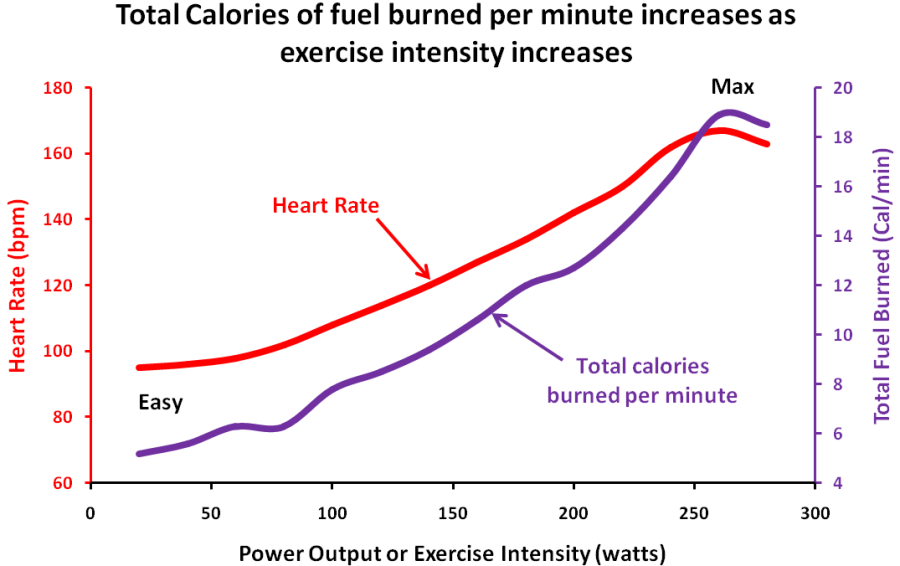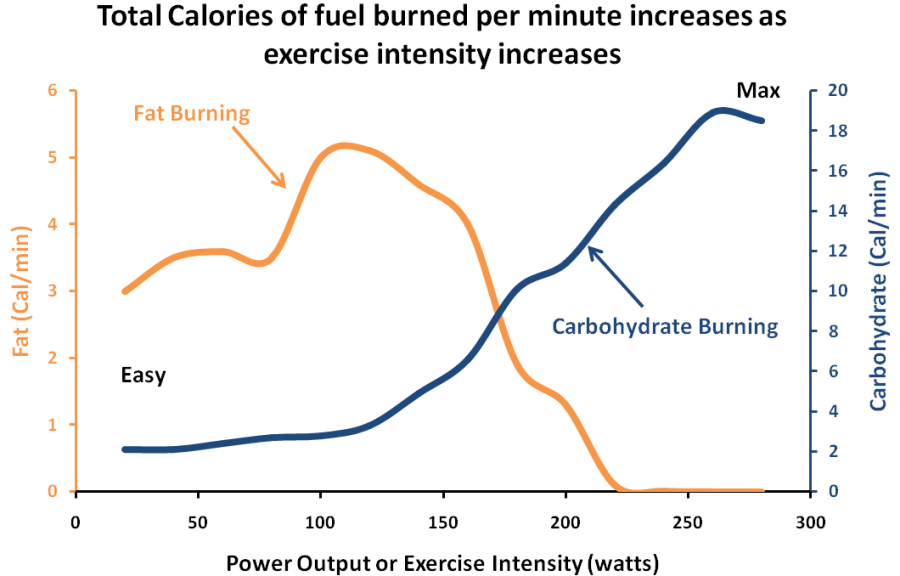Metabolism during Exercise
As your heart rate is increasing, your fat burning will at some stage drop to zero.

Metabolism tests while exercising demonstrate how your body burns fat and carbohydrates during exercise.
As exercise intensity increases, the way we burn fuel changes. The image on the right shows total calories (fat and carbohydrates) burned increasing dramatically as exercise intensity increases.
Surprisingly to most people, fat is used differently to carbohydrate.
Usually only a small amount of carbohydrate is burned at easy exercise intensity. However, the number of calories of carbohydrate increases drastically at higher exercise intensities.
As exercise intensity is rising, fat burning will at some stage drop to zero.
The second graph on the right shows a typical fuel burning profile. During easier exercise most calories of fuel are provided by fat, however as intensity increases carbohydrate takes over.
While this profile is quite typical for most people the precise points at which these events occur during exercise varies greatly from person to person. For example one person’s peak fat burning zone may be at a heart rate intensity of 100 – 120 beats per minute, whereas another person’s peak fat burning zone may be at 130 – 140 beats per minute.

